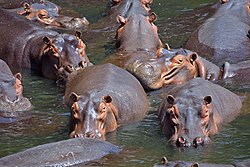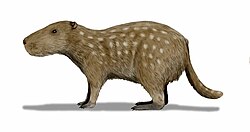This article may require cleanup to meet Wikipedia's quality standards. The specific problem is: many missing ref errors.(September 2021) |

The following is a list of largest mammals by family.
Contents
- Tenrecs and allies (Afrosoricida)
- Even-toed ungulates (Artiodactyla)
- Whales (Cetacea)
- Carnivorans (Carnivora)
- Bats (Chiroptera)
- Armadillos (Cingulata)
- Colugos (Dermoptera)
- Hedgehogs and gymnures (Erinaceomorpha)
- Hyraxes (Hyracoidea)
- Rabbits, hares, and pikas (Lagomorpha)
- Elephant shrews (Macroscelidea)
- Marsupials (Marsupialia)
- Monotremes (Monotremata)
- Odd-toed ungulates (Perissodactyla)
- Pangolins (Pholidota)
- Anteaters and sloths (Pilosa)
- Primates (Primates)
- Elephants and allies (Proboscidea)
- Rodents (Rodentia)
- Treeshrews (Scandentia)
- Dugongs and manatees (Sirenia)
- Shrews and moles (Soricomorpha)
- Aardvark (Tubulidentata)
- Other mammals
- See also
- Notes
- References
























